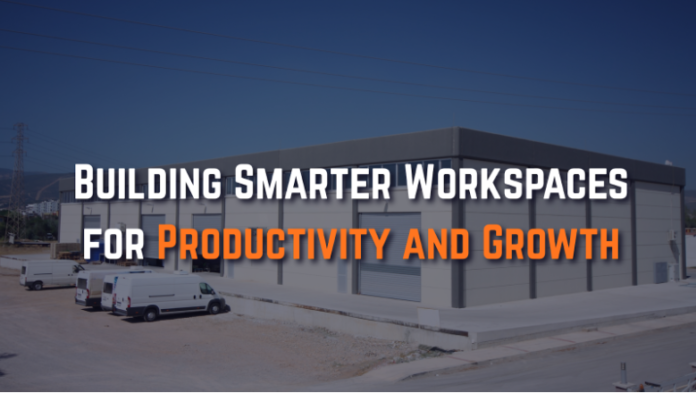In today’s fast-evolving business environment, warehouse construction has become more than just building storage facilities—it’s about designing intelligent, scalable spaces that drive efficiency, productivity, and long-term value. As Dubai continues to position itself as a global logistics and industrial hub, demand for innovative, functional, and sustainable warehouses has reached new heights.
Modern businesses understand that a well-designed warehouse is not merely a logistical asset but a strategic investment. From layout design to construction materials and automation integration, every aspect of warehouse development contributes to a company’s ability to operate efficiently, reduce costs, and meet customer expectations in a highly competitive market.
Evolving Role of Warehouses in Business Operations
Gone are the days when warehouses served solely as storage spaces. Today, they are vital operational centers—managing inventory, optimizing workflows, and facilitating quick delivery cycles. As industries expand and e-commerce continues to dominate, companies are rethinking how warehouse design impacts overall performance.
In Dubai, where global trade and distribution play crucial roles in the economy, warehouse facilities are being tailored to support high-performance operations. Whether catering to retail, manufacturing, logistics, or technology-driven sectors, the focus is on flexibility, energy efficiency, and smart design integration.
Strategically located warehouses near ports, free zones, and transport hubs enhance supply chain reliability and reduce transit times. This alignment between infrastructure and operations is one of the defining characteristics of modern warehouse projects across the UAE.
Designing for Efficiency and Scalability
A successful warehouse design balances function with foresight. The ability to accommodate growth, adapt to technological changes, and streamline workflow is central to modern warehouse architecture.
Key design principles—such as maximizing floor space utilization, implementing high ceilings for vertical storage, and ensuring seamless movement between loading zones—enable optimal performance. Sustainability also plays a growing role, with developers incorporating solar panels, insulated roofing, and energy-efficient lighting systems to reduce long-term operational costs.
As warehouse contractors in Dubai innovate with smart layouts and construction methods, companies benefit from facilities that are designed to perform well today while remaining adaptable for tomorrow’s needs. The combination of cutting-edge technology and sound engineering practices ensures that warehouses evolve alongside their businesses, supporting continued growth and market expansion.
Integration of Technology and Automation
Technology has completely transformed the warehouse construction sector. Automation, robotics, and advanced data systems have redefined how warehouses function—making operations faster, safer, and more reliable.
Automated Storage and Retrieval Systems (ASRS), conveyor systems, and IoT-enabled tracking tools are now integral components of high-performance warehouse design. These technologies allow for better inventory management, faster order fulfillment, and reduced human error, ultimately improving overall efficiency.
Moreover, Building Information Modeling (BIM) and digital twins are being used during construction to plan layouts with precision. These digital tools enable project teams to visualize every component before breaking ground, ensuring accuracy, cost savings, and timely delivery.
With Dubai’s vision of becoming a global smart logistics center, the adoption of automation in warehouses is not just a trend—it’s a necessity. The result is an ecosystem where every process, from storage to shipping, operates with precision and purpose.
Sustainability and Environmental Responsibility
Sustainability is now a cornerstone of modern construction practices, and warehouses are no exception. Developers and clients alike are prioritizing green building strategies that reduce environmental impact while improving operational performance.
Energy-efficient lighting, renewable energy integration, water recycling systems, and advanced insulation are increasingly common in newly constructed warehouses. These measures not only minimize carbon emissions but also significantly reduce utility expenses over time.
Dubai’s commitment to sustainability, through initiatives like the UAE Net Zero 2050 strategy, has encouraged construction firms to adopt environmentally conscious approaches. Warehouses designed with sustainability in mind align perfectly with the country’s broader goal of achieving sustainable urban development while maintaining global competitiveness.
Safety, Compliance, and Quality Standards
Safety and regulatory compliance are non-negotiable elements in warehouse construction. Each project must adhere to local and international standards that ensure structural integrity, fire resistance, and worker safety.
High-quality construction materials, advanced ventilation systems, and emergency response infrastructure are part of Dubai’s rigorous compliance framework. Reputable construction firms in the UAE go beyond minimum requirements—implementing best practices that create safe, efficient, and future-ready facilities.
Ensuring that warehouse designs meet industry-specific standards—whether for food storage, pharmaceuticals, or manufacturing—enhances both safety and operational consistency. This emphasis on compliance reflects Dubai’s commitment to maintaining excellence across all industrial and commercial sectors.
Creating Long-Term Value for Businesses
The true measure of a successful warehouse is its ability to deliver consistent value over time. A well-constructed warehouse contributes directly to operational efficiency, reduced downtime, and cost savings.
Beyond functionality, modern warehouses are designed to support employee well-being and productivity. Adequate lighting, ergonomic workspaces, and temperature-controlled environments all contribute to creating a facility that is not only efficient but also conducive to effective human performance.
The strategic importance of these facilities cannot be overstated. They serve as the backbone of logistics and distribution, playing a pivotal role in the seamless movement of goods that power Dubai’s economy and connect it to global markets.
Conclusion: Partnering With Experts for Long-Term Success
As businesses continue to expand and diversify, the demand for modern, efficient, and adaptable warehouse spaces will only grow. Success in this field depends on experience, innovation, and collaboration with trusted experts who understand the complexities of warehouse construction and the broader logistics landscape.
Partnering with a professional dubai construction company ensures that each project is handled with precision, quality, and forward-thinking design. From conceptualization to completion, expert construction teams transform ambitious ideas into high-performing facilities that support long-term operational success.
By combining sustainability, technology, and expert craftsmanship, Dubai’s warehouse projects are redefining industrial excellence—creating not just storage spaces, but strategic assets that empower businesses to thrive in a fast-changing global economy.

